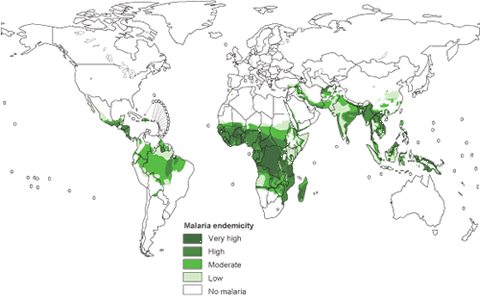
Background
Malaria remains one of the most prevailing diseases in the tropical world. With 200-450 million infections annually occurring worldwide it causes up to 2.7 million deaths. The disease remains endemic in more than 100 developing tropical countries where it represents a major drain on the economy. Its control is a major goal for improved world health. Enormous efforts are being made to find alternative antimalarial drugs to those such as quinine and synthetic antimalarials in view of the widespread emergence of resistant strains of Plasmodium spp.

Control of malaria has relied on herbal drugs for centuries. An infusion of Artemisia annua (ginghao; wormwood) has been used in China for at least the last 2000 years, yet its active ingredient (artemisinin) has only recently been identified. The bark of Cinchona ledgeriana has been used since before the 15th century, however, its active ingredient (Quinine) was not isolated until 1820. Many plants such as Warburgia ugandensis, Azadirachta indica and others are known to contribute to either the treatment of the disease or its control when used as insecticides to break the vector (mosquito) attack on humans. Most have been used as herbal remedies in traditional/natural medicine and some have subsequently found their way into conventional pharmacies.
Herbal medicine is becoming more widely accepted by many authorities including the WHO as a viable treatment for various ailments. The efforts of donors, businesses and farmers would benefit from improved coordination, thus encouraging further investment and creating a steady supply of effective remedies to those affected by malaria. This would reduce a lot of the confusion and misinformation concerning safe, appropriate and cost effective forms of treatment.
A great deal of research and scientific discussion has been going on concerning Artemisia and other new antimalarials. However, the actual number of authorized drugs on the market is still wholly insufficient to even begin to meet the needs of those who suffer from malaria. The same is true of public and private investment in the cultivation, processing, marketing and distribution of appropriate products throughout Africa.
With these aims in mind, the Centre for Development of Enterprise (CDE, EU), and the World Agroforestry Centre (ICRAF) with support from other partners have organized the Africa Herbal Antimalaria Meeting (AHAM) to be held on the ICRAF Campus in Nairobi from the 20th to 22nd March 2006.